Studying Options and Probability correlation – Answering a Key Question: Is Option Trading gambling?
You may have heard on many occasions that trading, both stocks or options may seem like gambling, and if you just jump into the market without any idea of what you are doing, you would probably be losing money in no time.
However, how much true is in those words? Is options trading gambling in reality? As you may know, there are some tools called technical indicators that try to help you to determine where the direction of the trend will continue, and this is valid for both options and stocks.
However, options are not as simple and easy as stocks, and even when we back ourselves in technical indicators, we may have the impression that option trading is just like gambling, depending on what strategy we may use, but especially in buying strategies.
But is this true, is option trading gambling just like in a casino? The answer is deeper than you might think…
Table of Contents
Studying Options and Probability correlation: Understanding the Theory of Market Neutrality is key
Before we begin, we need to comprehend what is the theory of market neutrality, as this is one of the most important concepts not only to understand options, but to understand how the Black Scholes model works and finding the key to figure out if options gambling is true or just a myth.
The theory of market neutrality states that one stock at a certain price will have the same probability of moving up one dollar and the same probability of moving down one dollar in the same period of time.
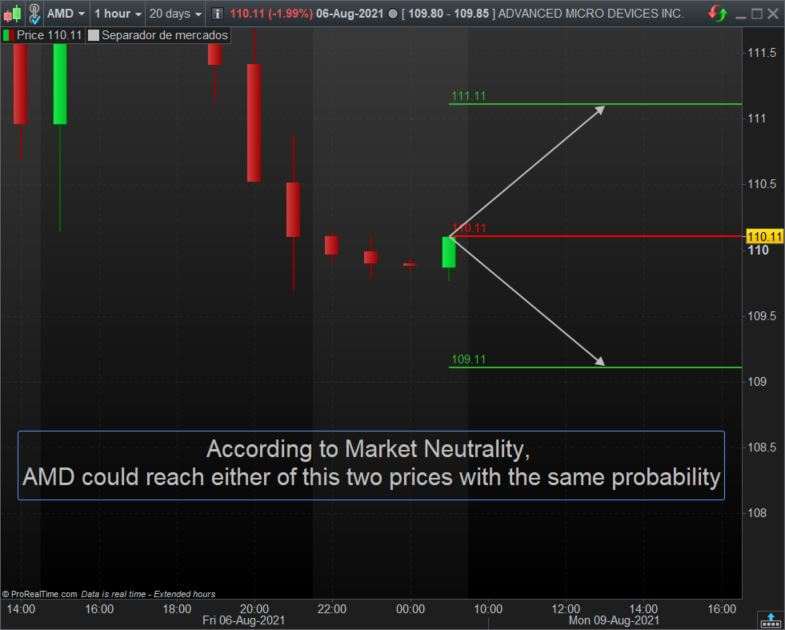
the Market Neutrality theory says that we have the same probability of reaching $111.11 and $109.11 in the short term.
If for example, the probability of reaching those prices were equal, we would say that we have a 50% chance of reaching $111.11 and another 50% chance of reaching $109.11.
To be more accurate and correctly state the probability of the price reaching a certain point, we need to know that the Market Neutrality theory is based on the statistical Gaussian Distribution 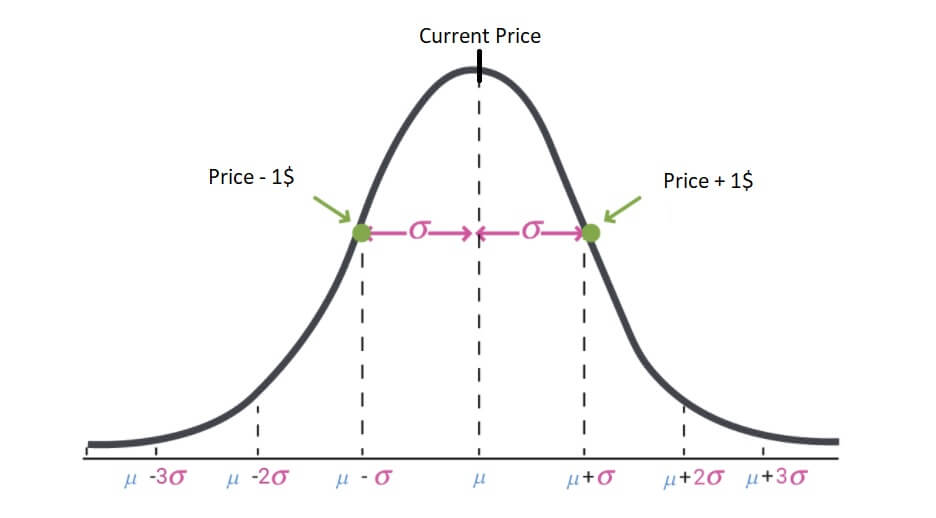
So, according to this theory, we could easily say that stock trading is like gambling or like throwing a coin into the air, right? If we strictly stick to this, there is the same chance of reaching either of these prices.
Rebating the theory of Market Neutrality
Well, we know that if we decided to use some accurate technical indicator, those probabilities would change.
For example, let us apply the stochastic indicator to figure out how the momentum is doing.
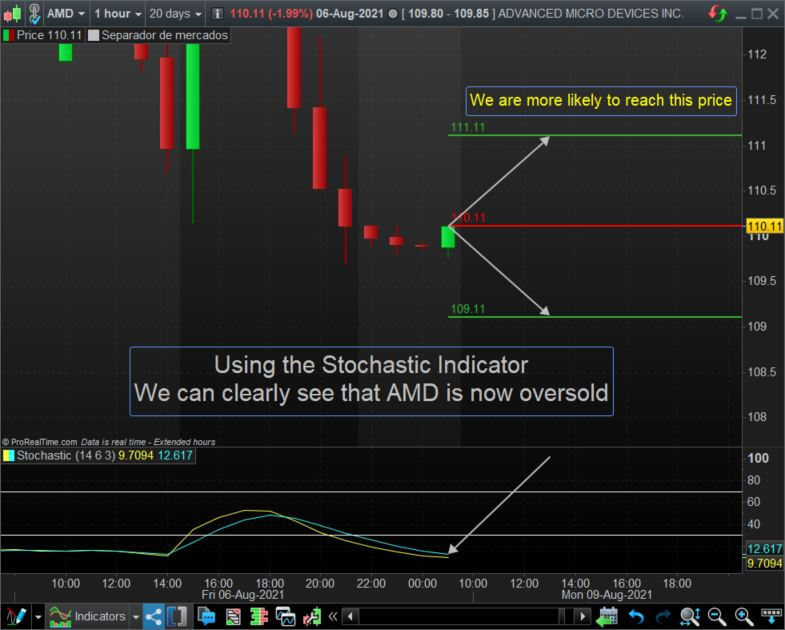
So, we can conclude that it is more likely that the price would reach $111.11 instead of falling down to $109.11.
Is this something we can say for sure? Of course not, but if we backed ourselves in the accuracy history of the indicator, it is much more likely that the price will rise than the price would fall.
As you begin to see, the Market Neutrality theory is much more a theory than a practical way to trade. However, you may be wondering what is this has anything to do with options, right? Well… much more than you think.
Do you need a Calculator that helps you create and analyze any option strategy in record time? |
The main link between Market Neutrality and option trading
It is important to note that the option model price that is used across all the markets is the Black-Scholes model, and this one is responsible for the premium and the other greeks.
As a reminder, the Black-Scholes model uses a Gaussian Distribution to obtain the inner calculations, including greeks and the probability of the option expiring In the Money.
And, as we have stated, the Market Neutrality theory assumes that the market will behave like a Gaussian Distribution. Do you begin to see the relationship here?
Deepening more about the Black-Scholes model, the Market Neutrality and the options gambling statement
Both models assume a Gaussian Distribution in their core and this is very important to understand the main point of this study about options and probability correlation.
Remember that every option contract in the market has a greek called delta associated, and just as we saw in this article here, we can easily calculate using delta, how probable is the option to expire with or without value.
As the Black-Scholes model assumes the Gaussian Distribution, delta probability clearly states how probable is the price of the stock to reach the strike price of the option. Let us see an example using our Advanced Calculator
A theoretical example with AMD stock
Okay, we are going to assume that the underlying price is $110 exactly.
According to Market Neutrality, it is equally probable that the stock could reach $111 and $109.
So, assuming this statement, if we set a call option whose strike price is $111 and another one put whose strike price is $109, we would have the same delta in both cases.
Let us see if this is true: 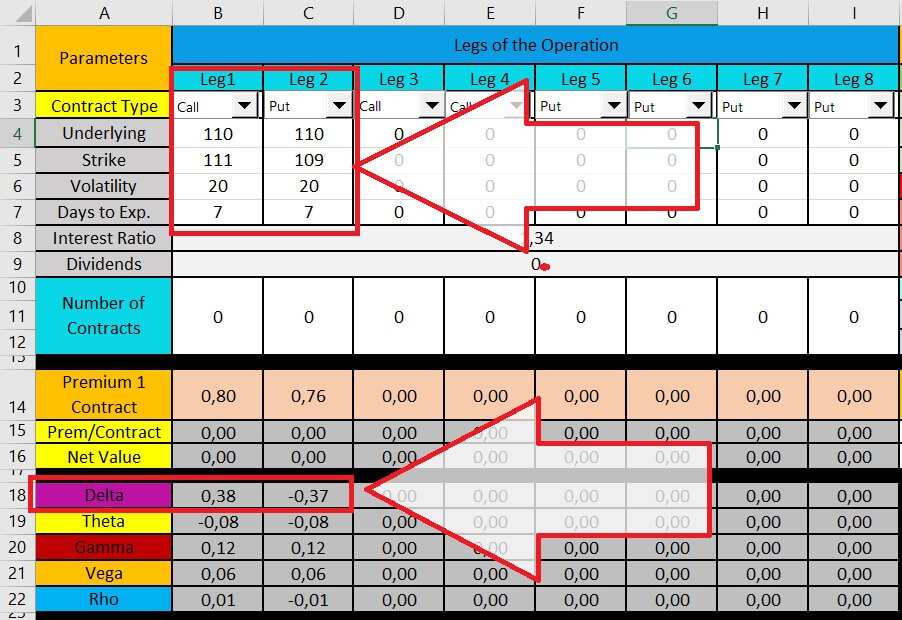
Then, is options trading gambling if the Black-Scholes model assumes Market Neutrality?
The answer to this question is that it depends.
We need to deepen in a few more things before giving an accurate answer. The first thing we need to ask ourselves is this: does a .50 delta guarantee a 50% chance of winning a trade? By winning we mean to obtain a profit.
The answer, again, is quite tricky: it depends on the strategy we use. In theory, it is true that, if we used a .50 delta, or, what is the same as an At The Money option, we will have a 50% of winning and losing.
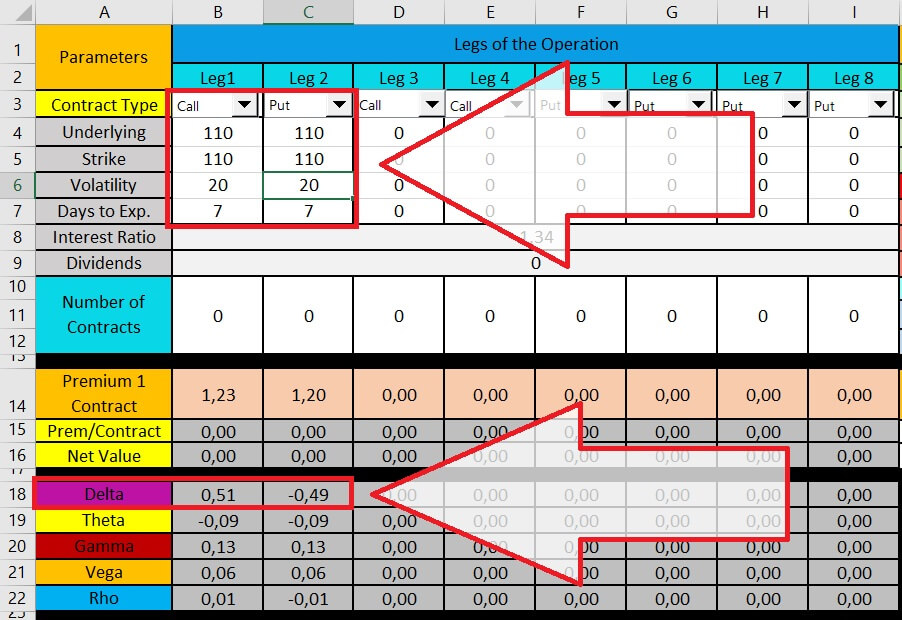
However, the theory is not contemplating an extremely important factor: time decay.
If we decide to buy an option, either call or put and at the day of the expiration, and the underlying has not moved a single penny, the value of the premium will have decrease because of the time decay.
However, delta will be equal, because, indeed, in theory, there is still a 50% chance of moving up and down according to Market Neutrality.
Here is the probe: 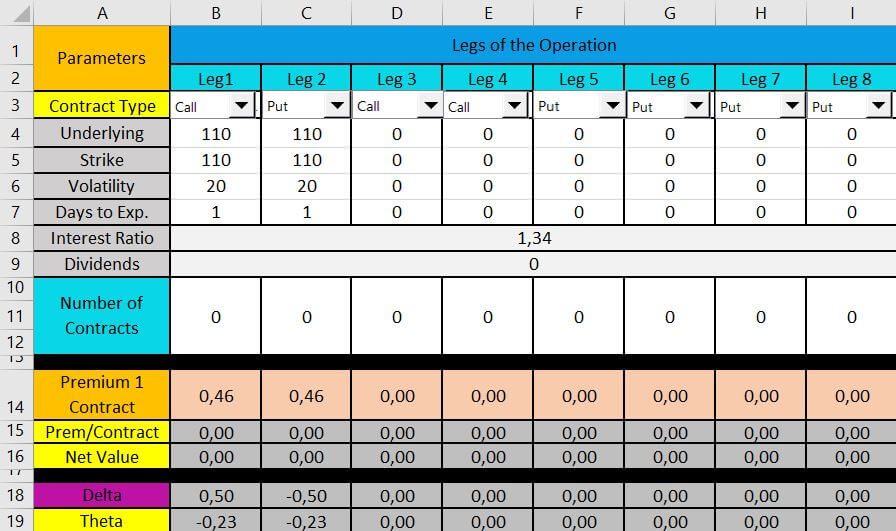
to $0.46.
The result of this trade
We have lost the trade because of time decay even though we had and have a 50% of winning the trade.
In other words, the strategy we choose matters, and much more than we might think! Instead, if we had sold the options, we would have obtained a profit, and again, the chances of winning, even when they were 50% theoretically, are in reality higher.
So, in other words, it is easier to profit by selling options than by buying them, regardless of what the Market Neutrality and the probability of profit say.
However, you may be wondering:
Is options trading gambling or it is safe if I pick a low delta selling strategy?
And the answer is that low delta is not necessarily a safe play if we just considered the Market Neutrality theory.
Yes, we could argue that if we decided to sell an option with a very low delta we will have the odds in our favor, without a doubt. Picking a 0.2
delta selling strategy would mean that, according to Market Neutrality, there is a 20% chance of losing the trade. Plus, we need to take into account that we are selling, so the odds will be even a little higher just like we have seen previously.
However, the market can easily change its momentum, just like we have seen with the AMD example. Let us bring this example again to the table, but we are going to add one new indicator, the 100 Exponential Moving Average.
Is options trading gambling?
As you can see, the price bottomed at the 100 Exponential Moving Average, and the stochastic indicator is about to switch its momentum to a bullish trend.
According to technical analysis, the price is about to rise, but according to Market Neutrality, it is equally probable for the price to go lower or to go higher. Okay, let us suppose that we have decided to sell a call option with the strike price at $111.
Let us take a look at the Advanced Calculator.
 In this case, the option is telling us that we have a delta of 0.38.
In this case, the option is telling us that we have a delta of 0.38.According to the Market Neutrality or the Gaussian probability, if we sell the contract, we will win this trade with a 62% probability.
If you even want to play safe, you could choose another strike price like the $112, whose delta is 0.26. In other words, by selling this option, Market Neutrality is telling that we will win the trade with a 74% probability.
However, the technical indicators are clearly telling us that the price is about to rise. So, even when the Market Neutrality theory does not apply to technical indicators, we cannot just simply ignore them because this could result in a very dangerous position.
Conclusion: Is there any way to trade options that is not gambling?
Now that we have stated all the facts, we can say that yes, there is a way to trade options that is not gambling.
The answer is complex, as we have seen but as a summary, we need to consider three things before opening an option trade as a safe play and not as a gamble: First: We need to know and understand what is Market Neutrality and how it affects the Black-Scholes model.
Second: We need to consider the strategy to use with options as time decay is an extremely important matter as it will be damaging or profiting our trade in the short and long term.
And third: We need to evaluate the technical indicators and the momentum in the market, we need to know if we are at a bottom or a top and trade in the right direction.
And those are the reasons why options trading is NOT like gambling. But remember, selling options can also be very risky because we expose ourselves to unlimited risk, and we could end up owing money just like we stated here.
.








